Dusk Street Scene Hoppers Caf and Urban Solitude
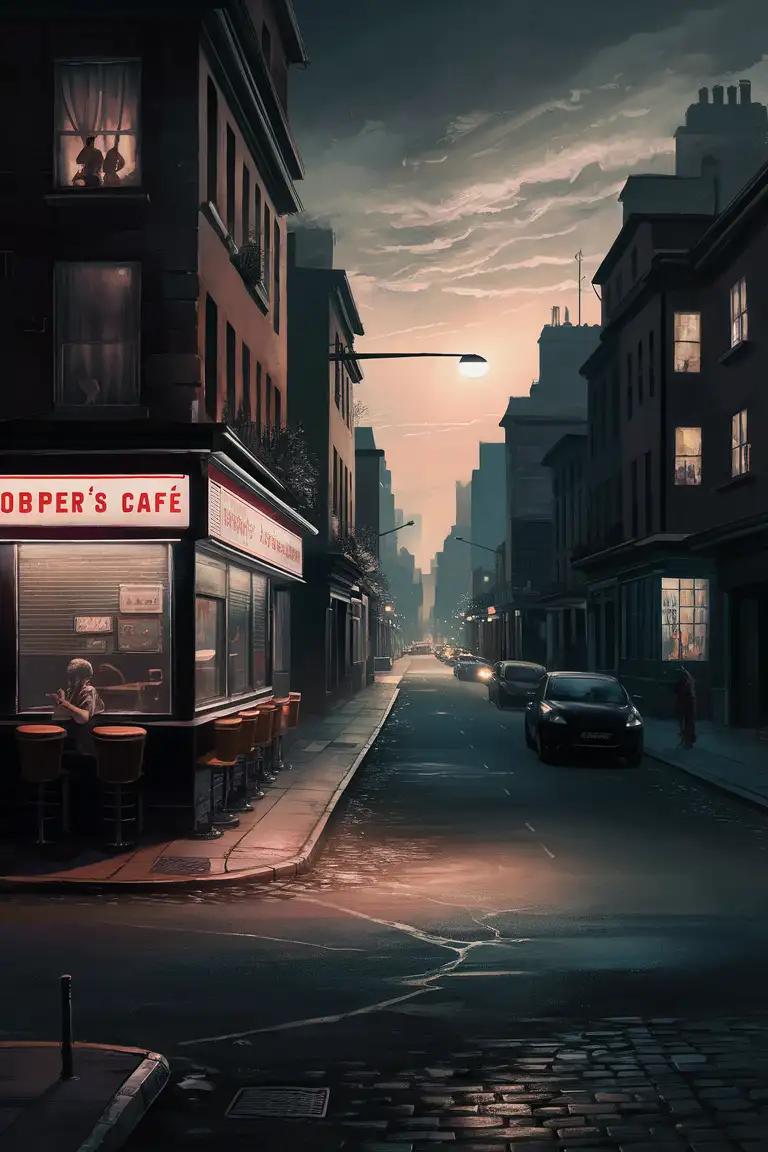
Image Prompt
Prompt
The painting portrays a quiet, atmospheric street scene at dusk, reminiscent of Edward Hopper's signature mood. The canvas is dominated by a dimly lit urban street, flanked by two-story buildings on both sides. The buildings are bathed in a soft, warm glow from the scattered streetlights and the last remnants of daylight on the horizon.
On the left side of the composition, there's a small, old-fashioned diner with a neon sign that reads "Hopper's Café." Its interior is dimly lit, revealing a lone figure sitting at the counter, their silhouette slightly illuminated by the counter's edge. The figure appears lost in thought, their face half-hidden in the shadows.
The right side of the street features a row of residential buildings with large, rectangular windows. Behind these windows, we catch glimpses of life unfolding within. In one window, a person can be seen reading a book, while in another, a couple sits quietly at a dining table, their faces obscured by the reflection of the interior light. These glimpses into the private lives of the inhabitants create a sense of voyeuristic intrigue, characteristic of Hopper's work.
The street itself is mostly deserted, with only a few parked cars casting long, dramatic shadows. The cobblestone road glistens with moisture from an earlier rain, intensifying the play of light and shadows. The distant streetlight at the end of the road casts a soft, ethereal glow, drawing the viewer's eye toward the vanishing point.
Above, the sky transitions from deep, dusky blue near the horizon to a purplish hue higher up, signaling the approaching night. A few stars twinkle faintly in the sky, further enhancing the sense of solitude and isolation.
In this digital painting, the essence of Edward Hopper's distinctive mood, use of light, and ability to convey a narrative through visuals is captured, evoking a sense of quiet contemplation and nostalgia.
Model: visiCanvas
Ratio: 2:3
Related AI Images
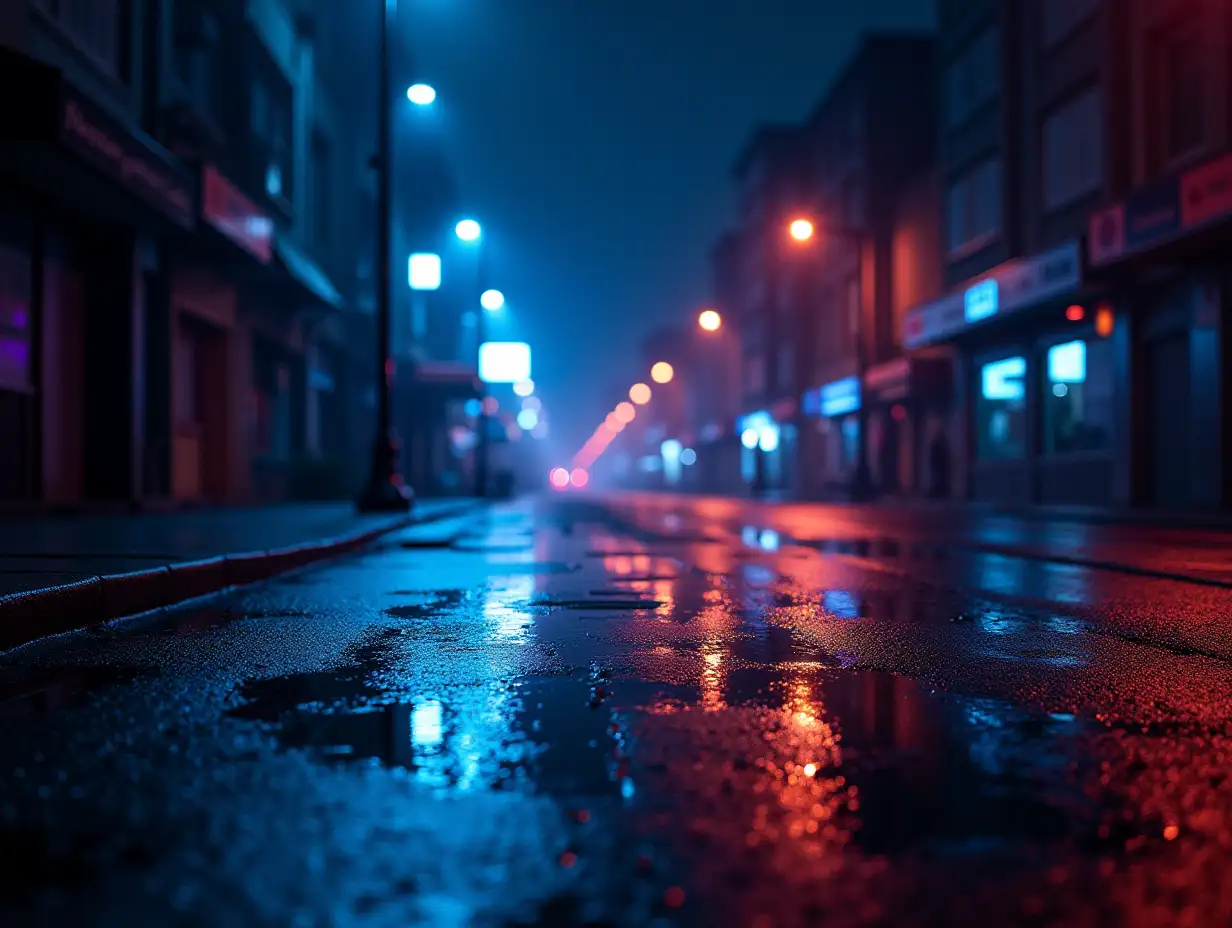

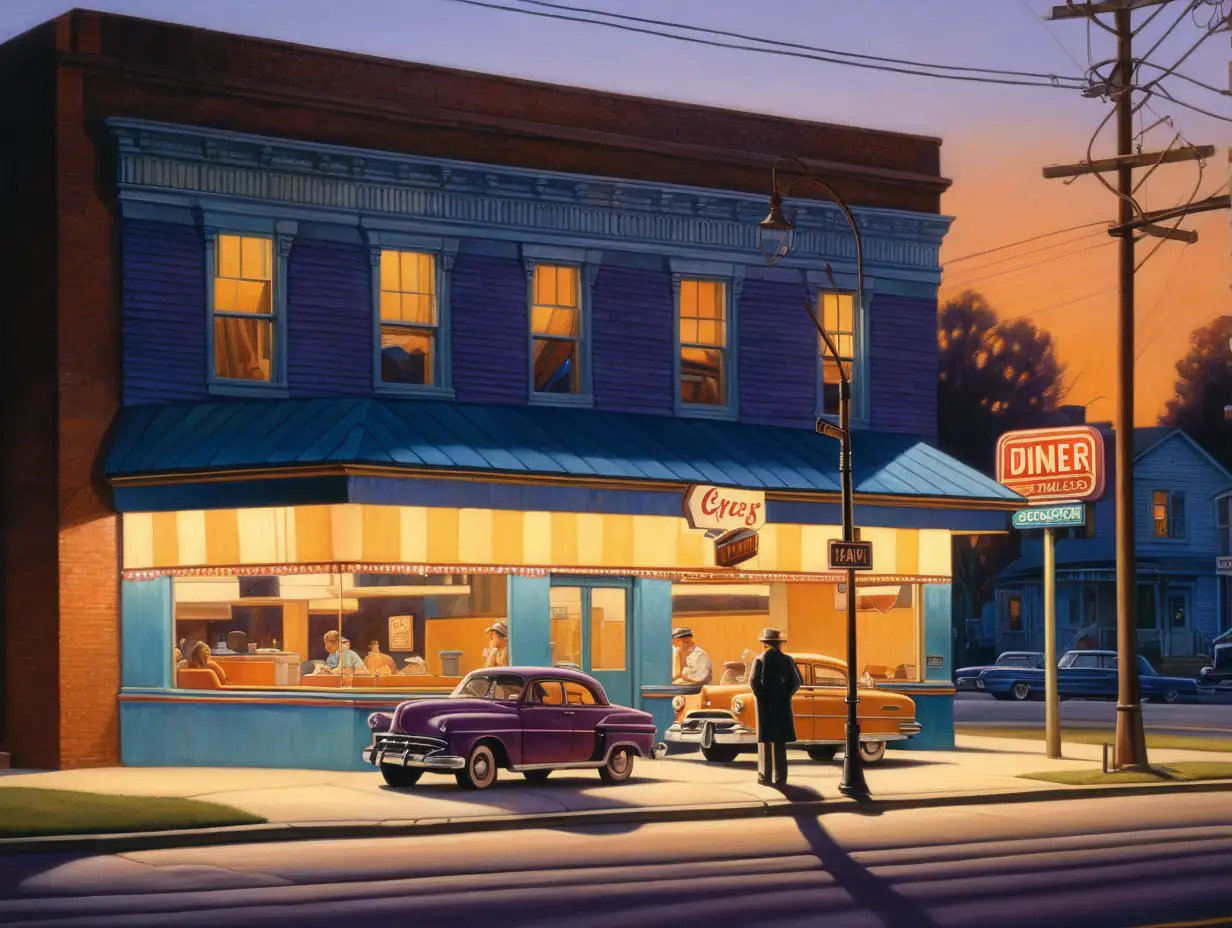
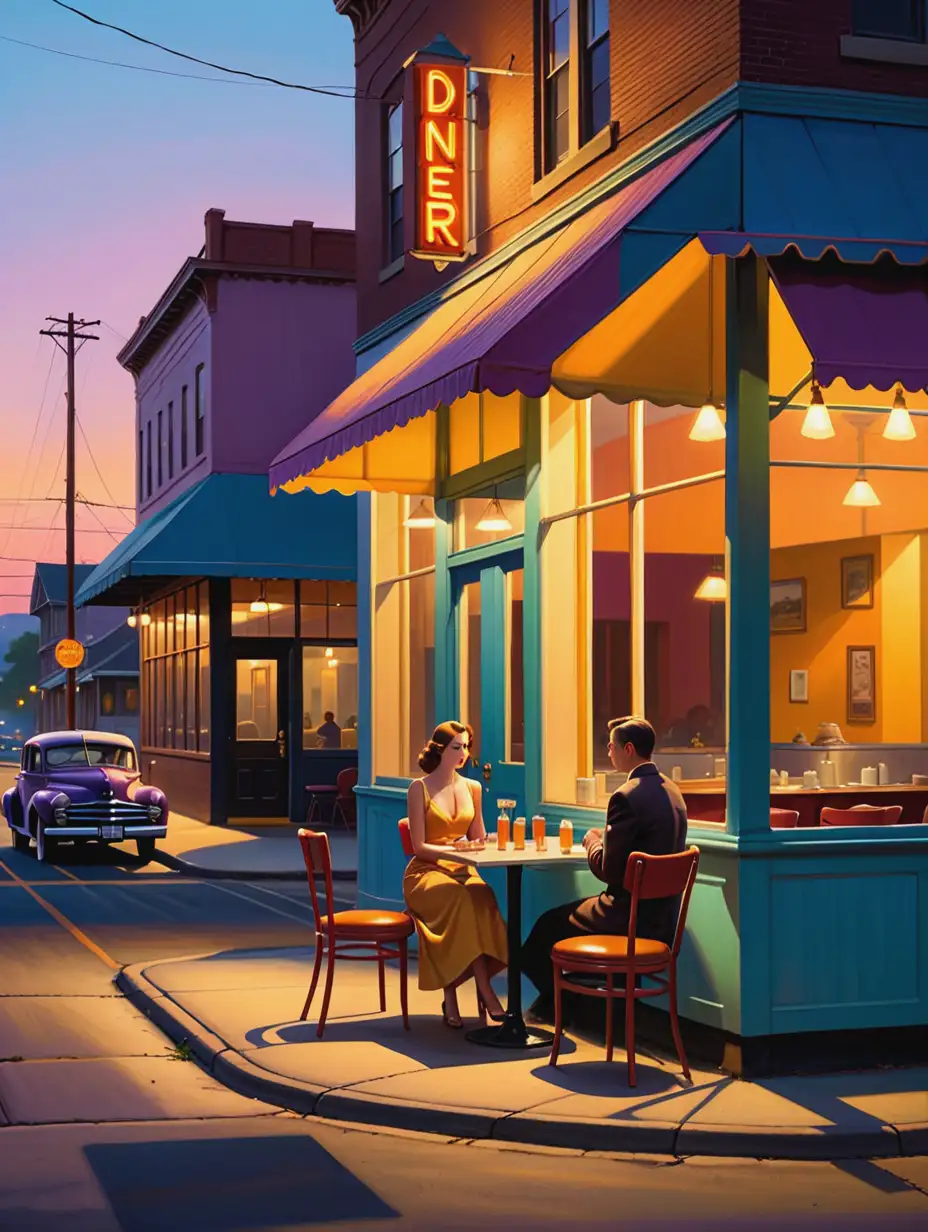
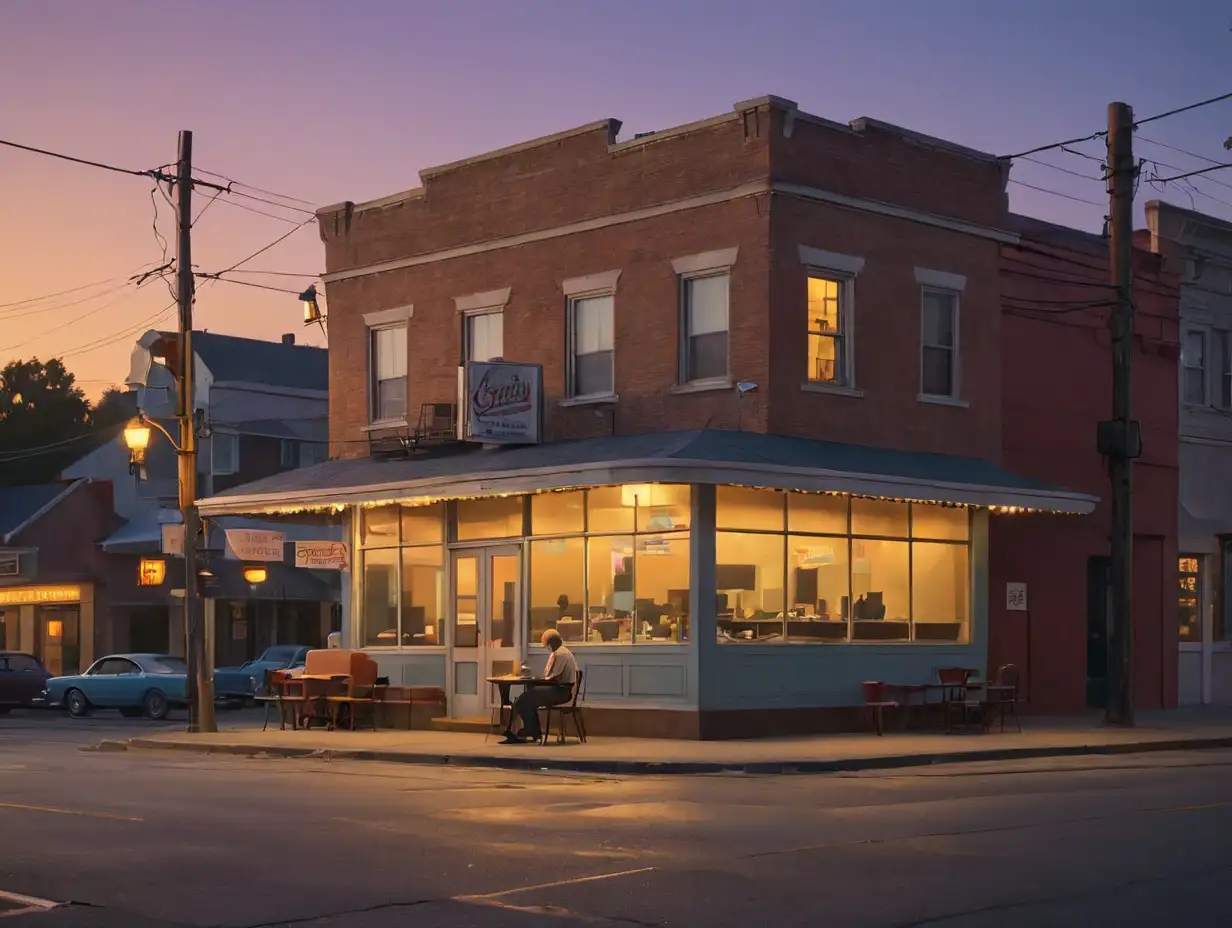
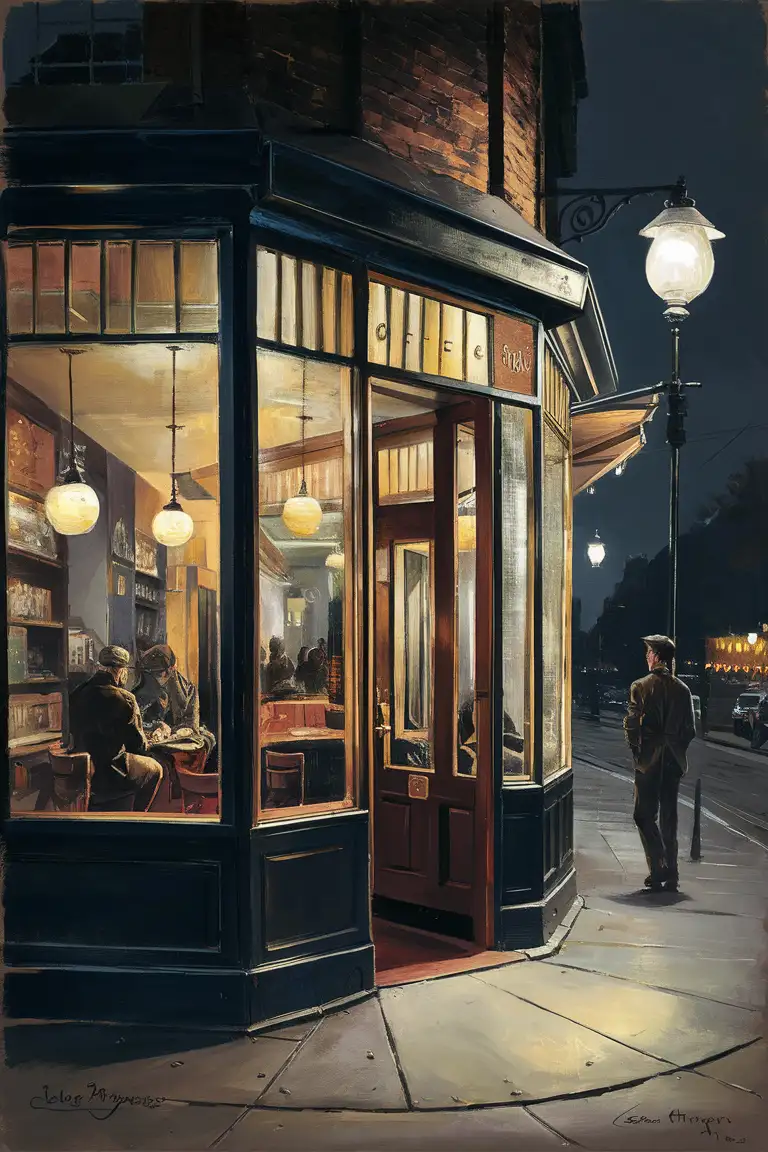
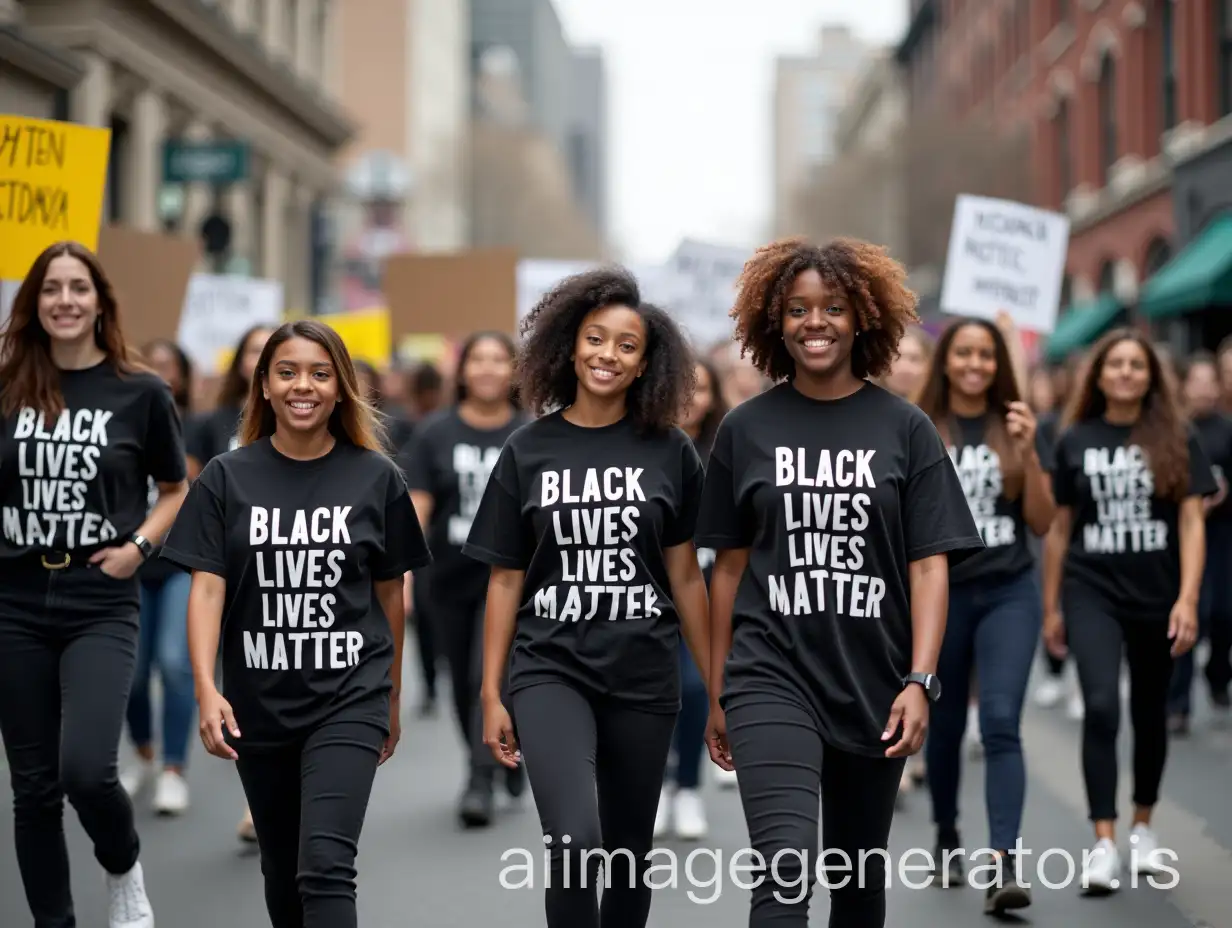
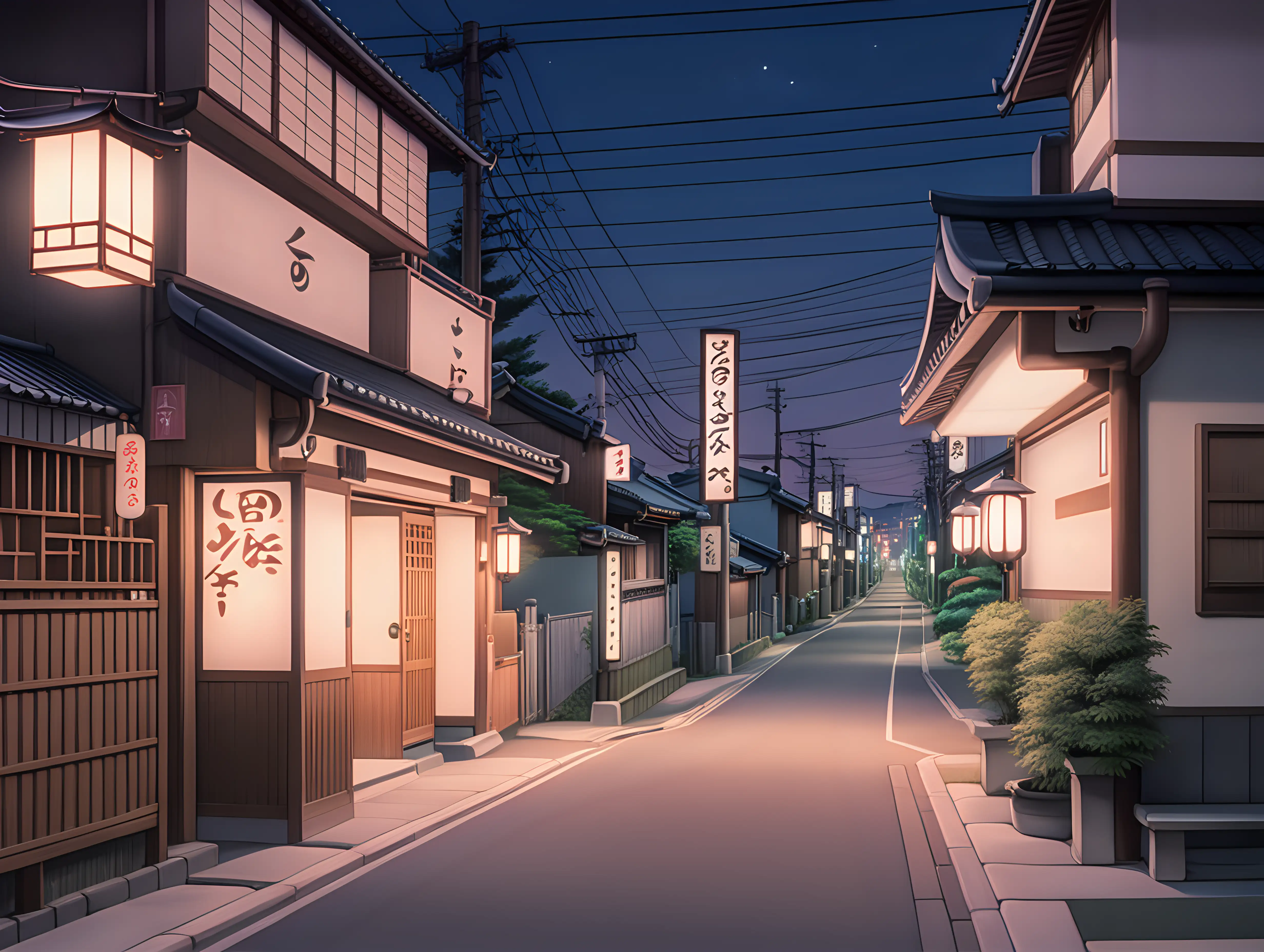
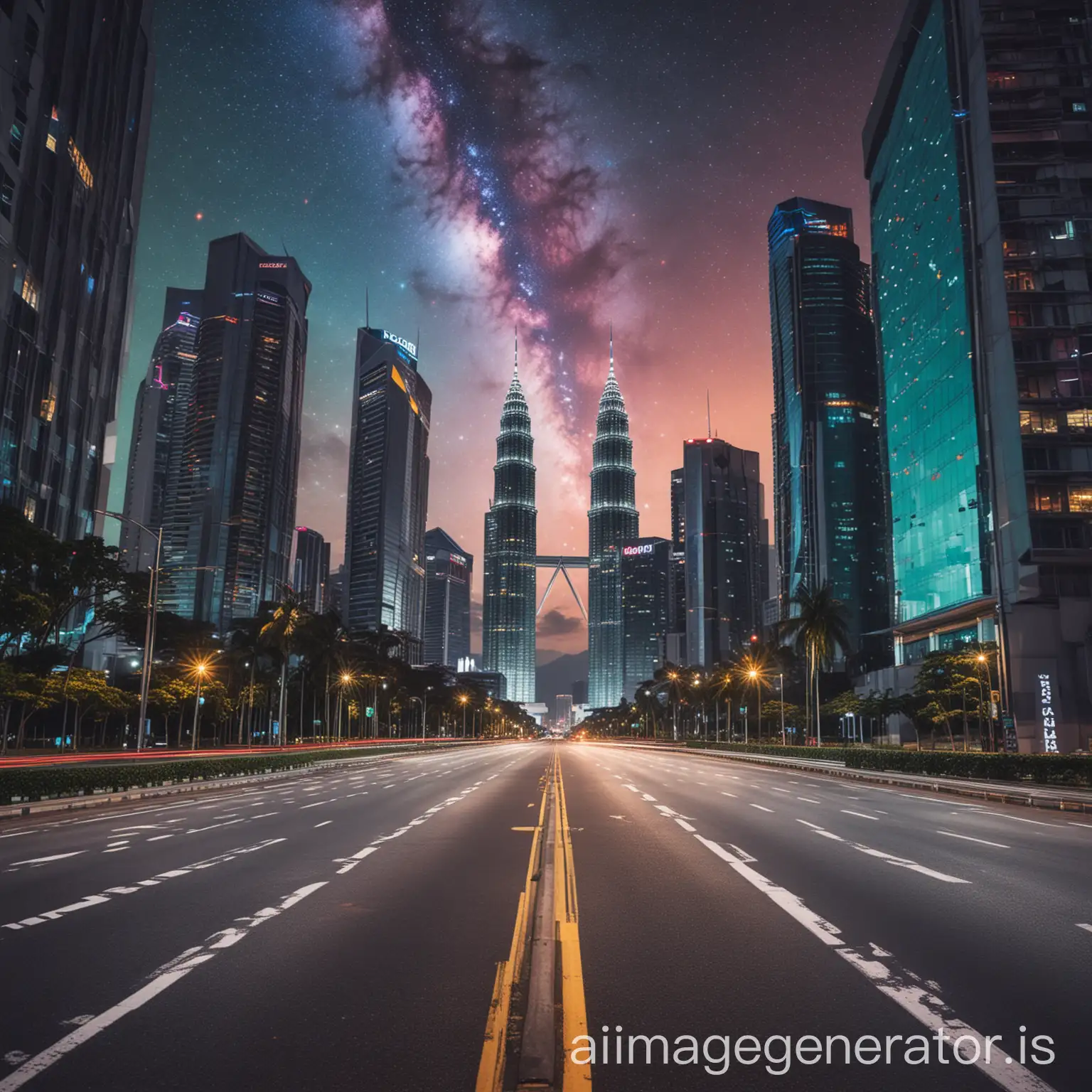
Related Tags
Prompt Analyze
- Subject: The painting depicts a quiet, atmospheric street scene at dusk, reminiscent of Edward Hopper's signature mood. The urban setting is dominated by two-story buildings flanking a dimly lit street. The scene exudes a sense of solitude and nostalgia. Background: The canvas is bathed in a soft, warm glow from scattered streetlights and the last remnants of daylight on the horizon. Cobblestone roads glisten with moisture from an earlier rain, intensifying the play of light and shadows. Setting: On the left, an old-fashioned diner, 'Hopper's Café,' stands with its interior dimly lit, featuring a lone figure seated at the counter lost in thought. The right side showcases residential buildings with glimpses of life unfolding behind large, rectangular windows, adding voyeuristic intrigue characteristic of Hopper's work. Style/Coloring: The painting employs muted tones and soft, warm lighting, reminiscent of Hopper's style. Deep dusky blues transition to purplish hues in the sky, signaling the approaching night. Dramatic shadows cast by parked cars enhance the atmospheric effect. Action/Items: The street is mostly deserted, with a few parked cars casting long shadows. In the diner, a lone figure sits at the counter, and glimpses of life are seen through residential windows, such as someone reading a book or a couple dining. The distant streetlight draws the viewer's eye toward the vanishing point. Costume/Appearance: The figures are depicted in typical urban attire, fitting the setting's mood. The lone figure at the diner counter appears contemplative, while the inhabitants glimpsed through windows are not detailed, maintaining a sense of anonymity. Accessories: The diner features a neon sign reading 'Hopper's Café,' adding a nostalgic touch. The scattered streetlights and distant stars in the sky enhance the nocturnal atmosphere, contributing to the overall sense of urban solitude and contemplation.